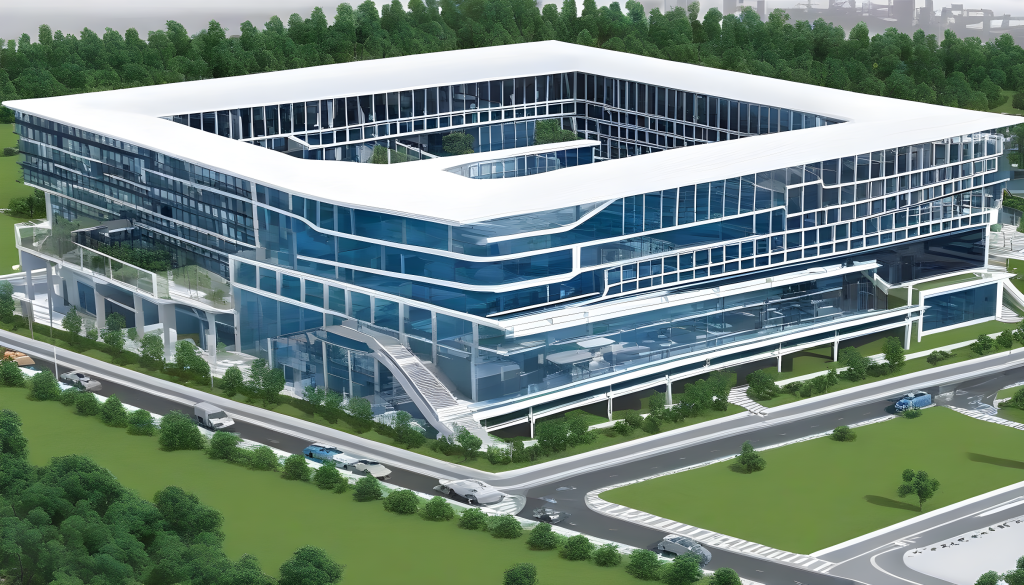Introduction:
In an era defined by technological innovation, Building Information Modeling (BIM) stands out as a transformative force with the potential to reshape how industries approach design, construction, and project management. This blog delves into the importance of BIM and its versatile applications across various fields, highlighting the profound impact it has on efficiency, collaboration, and sustainability.
- Enhanced Collaboration and Communication:
One of the cornerstones of BIM is its ability to foster collaboration among diverse stakeholders in a project. By providing a shared platform for architects, engineers, contractors, and other professionals, BIM breaks down silos and encourages real-time communication. This collaborative approach ensures that all parties work from a unified model, reducing errors, minimizing conflicts, and fostering a more streamlined project lifecycle.
- Efficiency in Design and Construction:
BIM’s 3D modeling capabilities go beyond aesthetics; they enable a more efficient design and construction process. Architects can visualize and iterate designs more effectively, while construction professionals can simulate and analyze the building process before breaking ground. This efficiency translates into cost savings, reduced construction time, and improved project outcomes.
- Cost Savings and Risk Mitigation:
BIM’s data-centric approach allows for accurate estimation of project costs and resource requirements. This not only helps in budgeting but also aids in identifying potential risks and challenges early in the project lifecycle. By addressing issues proactively, BIM contributes to significant cost savings and minimizes the likelihood of costly delays.
- Lifecycle Management and Facilities Maintenance:
Beyond construction, BIM plays a vital role in facilities management and maintenance. The rich data embedded in BIM models provides facility managers with a comprehensive understanding of the building’s components, allowing for effective maintenance planning, asset management, and space utilization. This results in longer asset lifespan and optimal operational efficiency.
- Sustainability and Environmental Impact:
BIM is a powerful tool in the pursuit of sustainable construction practices. Through energy analysis, material optimization, and lifecycle assessments, BIM helps professionals make informed decisions that contribute to environmentally conscious designs. As sustainability becomes a global priority, BIM emerges as an indispensable asset for creating eco-friendly and energy-efficient structures.
- Expanding into New Frontiers:
While traditionally associated with architecture and construction, BIM is expanding its reach into diverse fields. From infrastructure projects to urban planning, BIM is becoming instrumental in shaping the future of smart cities, transportation networks, and public spaces. Its versatility positions BIM as a key player in addressing the complex challenges of our evolving world.
Conclusion:
In a world where efficiency, collaboration, and sustainability are paramount, the importance of BIM cannot be overstated. Its utilization across various industries is a testament to its transformative capabilities, making it a cornerstone for building a future that is not only technologically advanced but also sustainable and interconnected. As industries continue to embrace BIM, the potential for innovation and positive impact is boundless.
Q1: What makes Building Information Modeling (BIM) a transformative force in today’s technological era?
A1: BIM stands out as a transformative force due to its potential to reshape how industries approach design, construction, and project management. Its 3D modeling capabilities, collaborative features, and data-centric approach make it a key player in the technological innovation defining our era.
Q2: How does BIM foster collaboration among diverse stakeholders in a project?
A2: BIM provides a shared platform for architects, engineers, contractors, and other professionals, breaking down silos and encouraging real-time communication. This collaborative approach ensures that all parties work from a unified model, reducing errors, minimizing conflicts, and fostering a more streamlined project lifecycle.
Q3: How does BIM contribute to efficiency in design and construction processes?
A3: BIM’s 3D modeling capabilities go beyond aesthetics, enabling more efficient design and construction processes. Architects can visualize and iterate designs effectively, while construction professionals can simulate and analyze the building process before breaking ground. This efficiency leads to cost savings, reduced construction time, and improved project outcomes.
Q4: How does BIM support cost savings and risk mitigation in projects?
A4: BIM’s data-centric approach allows for accurate estimation of project costs and resource requirements. It aids in budgeting and helps identify potential risks and challenges early in the project lifecycle. By addressing issues proactively, BIM contributes to significant cost savings and minimizes the likelihood of costly delays.
Q5: What role does BIM play in facilities management and maintenance beyond the construction phase?
A5: BIM plays a vital role in facilities management and maintenance by providing rich data on the building’s components. This enables effective maintenance planning, asset management, and space utilization, resulting in a longer asset lifespan and optimal operational efficiency.
Q6: How does BIM contribute to sustainable construction practices?
A6: BIM contributes to sustainable construction practices through energy analysis, material optimization, and lifecycle assessments. It helps professionals make informed decisions that contribute to environmentally conscious designs, making BIM an indispensable asset for creating eco-friendly and energy-efficient structures.
Q7: In what ways is BIM expanding into new frontiers beyond architecture and construction?
A7: BIM is expanding into diverse fields, including infrastructure projects, urban planning, smart cities, transportation networks, and public spaces. Its versatility positions BIM as a key player in addressing the complex challenges of our evolving world, showcasing its potential for innovation and positive impact.
Q8: Why is the utilization of BIM crucial for building a technologically advanced, sustainable, and interconnected future?
A8: BIM’s utilization is crucial as it embodies efficiency, collaboration, and sustainability, making it a cornerstone for building a future that meets the demands of our interconnected world. Industries embracing BIM are positioned for innovation and positive impact, contributing to a future that is both technologically advanced and sustainable.








